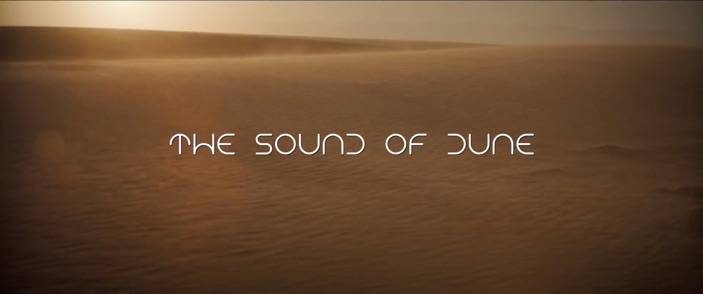A unique feature of the discussions we had about sound with Denis Villeneuve and Joe Walker is their very casual and contemplative nature. Denis is not a micro-manager when describing what he wants. Most often it takes the form of advice on what narrative goals the sound should achieve. This is consistent with Denis’ goal of creating a sound track that is motivated most directly by story. His comments, when reviewing our sounds or the mix with Ron and Doug, are most often in relationship to how they make him feel and what narrative value they have or lack. It would be rare for Denis to give us a specific direction of what something should sound “like” but, rather, what it needed to achieve.
The production returned to Los Angeles in early August 2019 from Budapest (and Jordan) and Theo and I began in earnest building the hundreds of new sounds needed to flesh out Joe Walkers edit.
Starting a Denis Villeneuve movie is great deal of fun because those early months are our play-time. Denis encourages a free-form style of experimentation allowing us to follow our intuitions, try crazy ideas and generally take risks. Failure, in this case, is an option. Denis intuitively understand the fickle nature of creativity and the need to try something or break something to see what works. Theo and I had about 8 weeks in the fall of 2019 to go crazy... before we needed to be adults and start delivering sound to picture. During this play-time we found ourselves intoning a phrase that we later find out many collaborators would use with Denis before presenting something outrageous, non-traditional or just bizarre: “You’re probably going to hate this but...” Fortunately, Denis has a way of not only finding the kernel of truth in these moments of self-doubt but encouraging exploration of the madness that created them with the hopes they lead to other more productive or useful sounds.
In late September, we had our first real, grown-up sound brief with Denis and Joe to target the “big-ticket” items to begin designing: the Shields, the Voice, the Ornithopters and everything Worm related. From then on we would work in blocks of two to three weeks of design and review, showing our developments in my studio in West Hollywood as they kibitzed and commented.
Then COVID came.
Both Theo and I moved to home studios and design reviews continued on Zoom. This, most often, required building stereo crash-downs of the new sounds in QT files we would send to Joe Walker, who would drive the session from his Avid and play out to the four of us over Zoom or Evercast. This allowed Joe to build those sounds into the early edit and preview them in context with latest VFX or score mockups. This would lead to an ongoing collaboration with Hans Zimmer and the VFX team as sound drove image and vice-versa.
Denis, frustratingly, was relegated to listening over headphones, during these review sessions, to a stereo mix (minus subwoofer). Though Denis has a high quality pair of headphones, not even the best ones are capable of reproducing the low-frequency content so integral to some of our bigger sounds. This was a constant source of frustration leading to repeated promises from Theo and I that there was plenty to go around and all would be right once heard in a proper mix theater in the expert hands of Ron Bartlett and Doug Hemphill.
The payoff would be the extraordinary greeting our work got from Denis as we began the final mix at Stage 9 at Warner Brothers when he finally heard, in person, what we had been crafting for months in isolation. Finally mated with Hans Zimmer’s unique and transcendent score, Denis was free to conduct this symphony of sound, one he had been composing for over a year.
.



